Ferdinand Berthoud FB 1L: When History Has A Date With Progress
Did you know that our moon is kind of rare? Not rare in the way that it is unlikely for earth to have a moon, as scientists estimate that at least 50 percent of planets have one or more moons and there are quite possibly at least as many rogue moons wandering planetless throughout the universe.
Our moon is rare in that it is very large compared to the earth and, due to an impact with a Mars-sized object, it is also made from a lot of the same materials as earth. And, very curiously, it seems closer to the earth than one might guess for such a stable orbit.
Yet it isn’t as rare as we used to believe. According to simulations of rocky planetary formation in the early solar system undertaken at the University of Zurich in collaboration with NASA’s Jet Propulsion Laboratory, the likelihood of a large collision creating an earth/moon-like pair happens, on average, about eight percent of the time. Still, the simulations had many limitations and so the error deviation could increase that to 25 percent or decrease the likelihood down to just over two percent.
But given the estimated 100 billion planets just in the Milky Way galaxy alone, at worst the estimates would mean there are more than 2.2 billion planets with large moons like us that have stable orbits and, as a result, more consistent climates (believed to be a key factor for developing life). So, while that is a small number compared to the total possible moons, it is still a huge number meaning that our “rare” moon definitely has a lot of siblings out in the cosmos.
And yet it is still incredible to know that we are lucky enough to live on a planet with such a significantly large and nearby moon. That is probably why throughout history the moon has been such a focus of interest. Even before we understood astronomy and solar system formation, it seemed like an incredibly rare treat.
It also should come as no surprise that watchmakers throughout history have constantly been fascinated by the moon, especially since it was a useful tool for nautical navigation, one of the early drivers of horological technology.
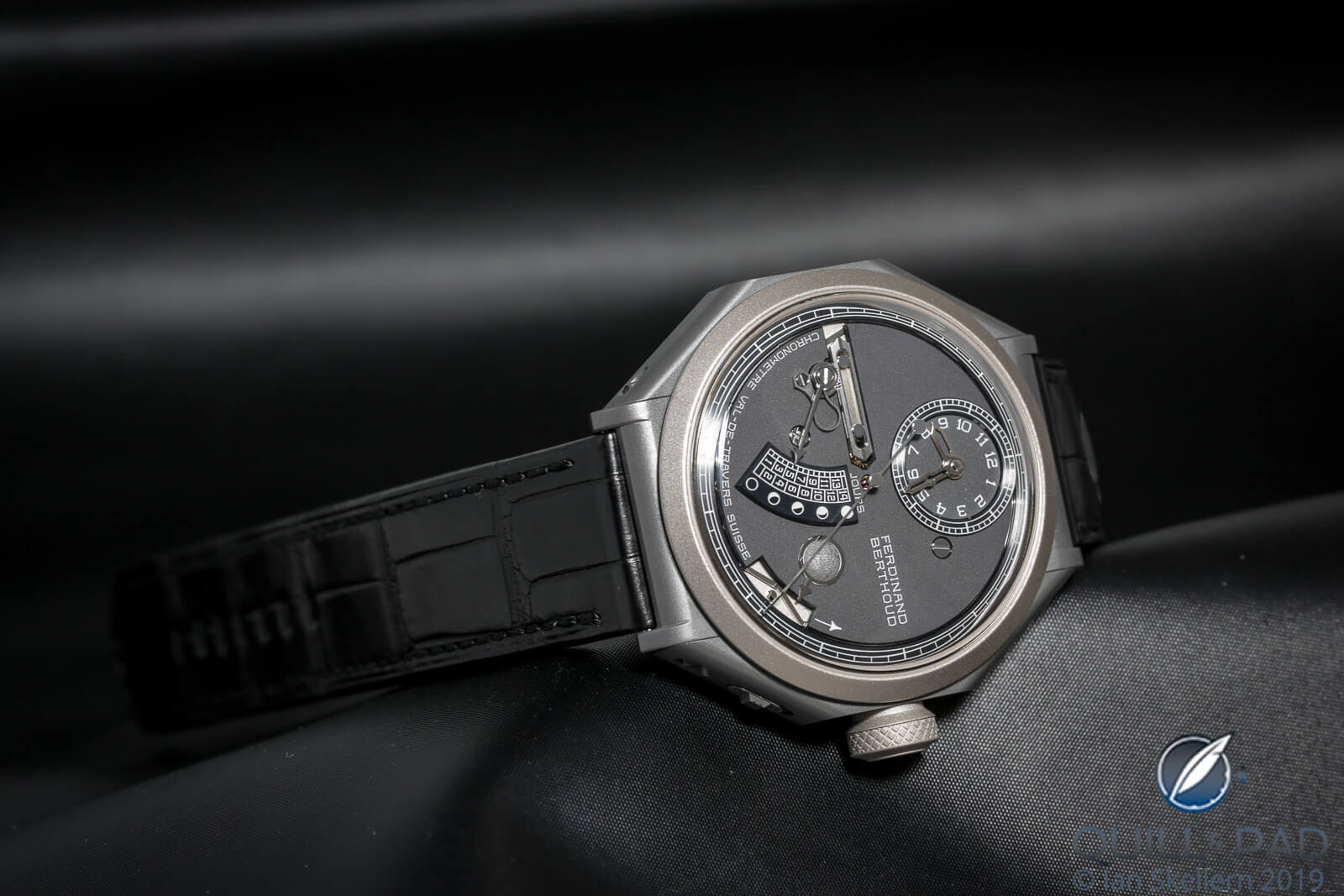
Ferdinand Berthoud FB 1L Far Side of the Moon
Boutique brand Ferdinand Berthoud knows this, and with its latest release has revisited part of the history of its namesake, an eighteenth-century French horologist vital in developing accurate marine chronometers combined with precise measurements of the moon location and age to aid in nautical navigation.
The Ferdinand Berthoud FB 1L features an age-of-the-moon indication tied to a moon phase display. It also discerns the direction of phase – waxing or waning – to signify where in the lunar cycle the moon is.
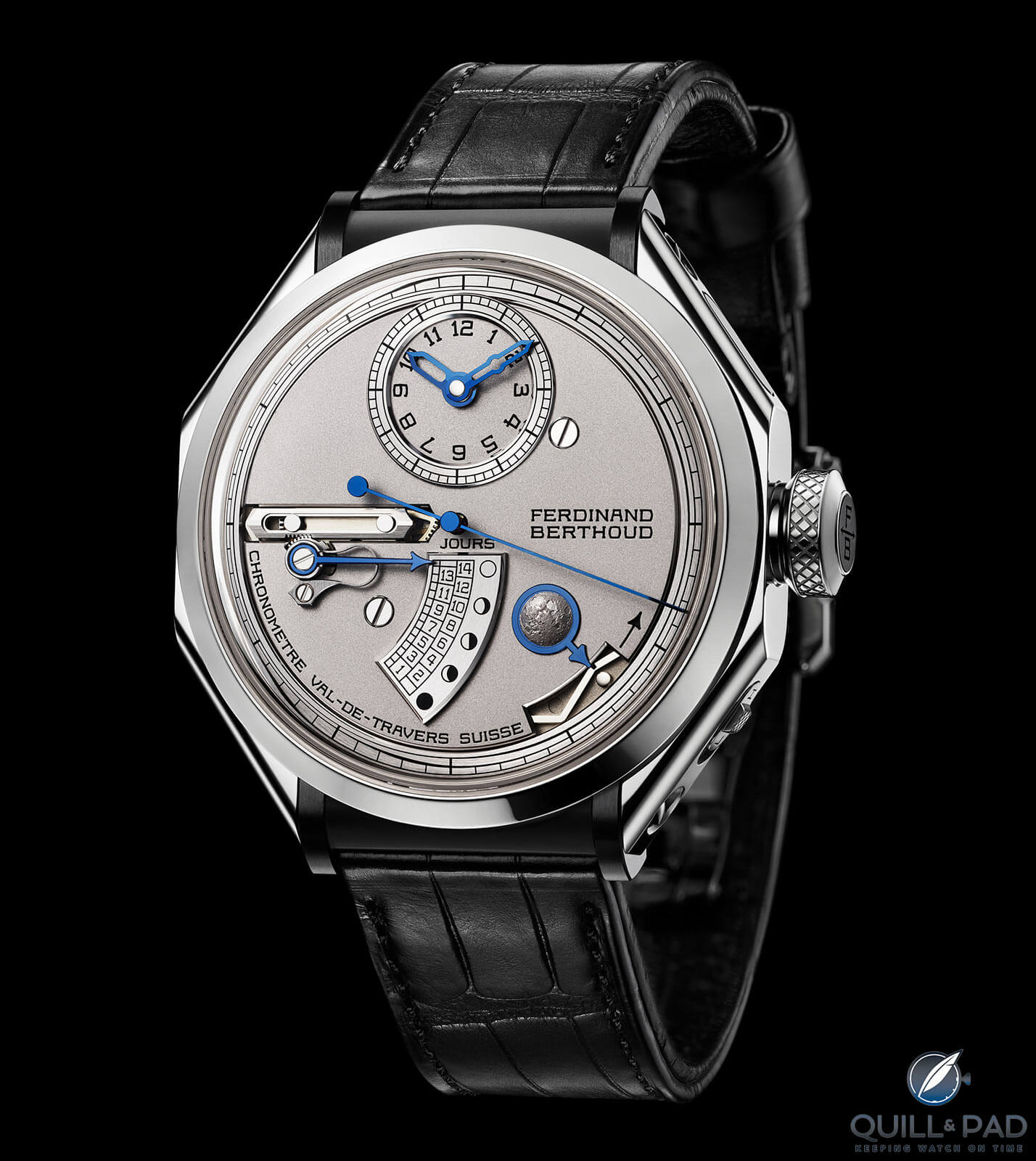
Ferdinand Berthoud FB 1L Near Side of the Moon
And all presented using some cool mechanics and very clever design.
Ferdinand Berthoud FB 1L: a new take on an old idea
The FB 1L comes in two versions: 1L.1 known as “Near Side of the Moon” and 1L.4 known as “Far Side of the Moon.” This watch pays homage to the entire period of horological and nautical collaboration during the mid-eighteenth century driving the increase in both high-precision timekeeping ability and astronomical observations.
Engineers, watchmakers, and sailors worked closely together during the scientific enlightenment to improve instruments and develop ways of more accurately measuring longitude, resulting in a vast improvement in navigation at sea. The FB 1L takes the measurements so critical to those endeavors and adds them to the face of this new wristwatch, creating an instrument that would likely have been coveted by sailors and scientists alike.
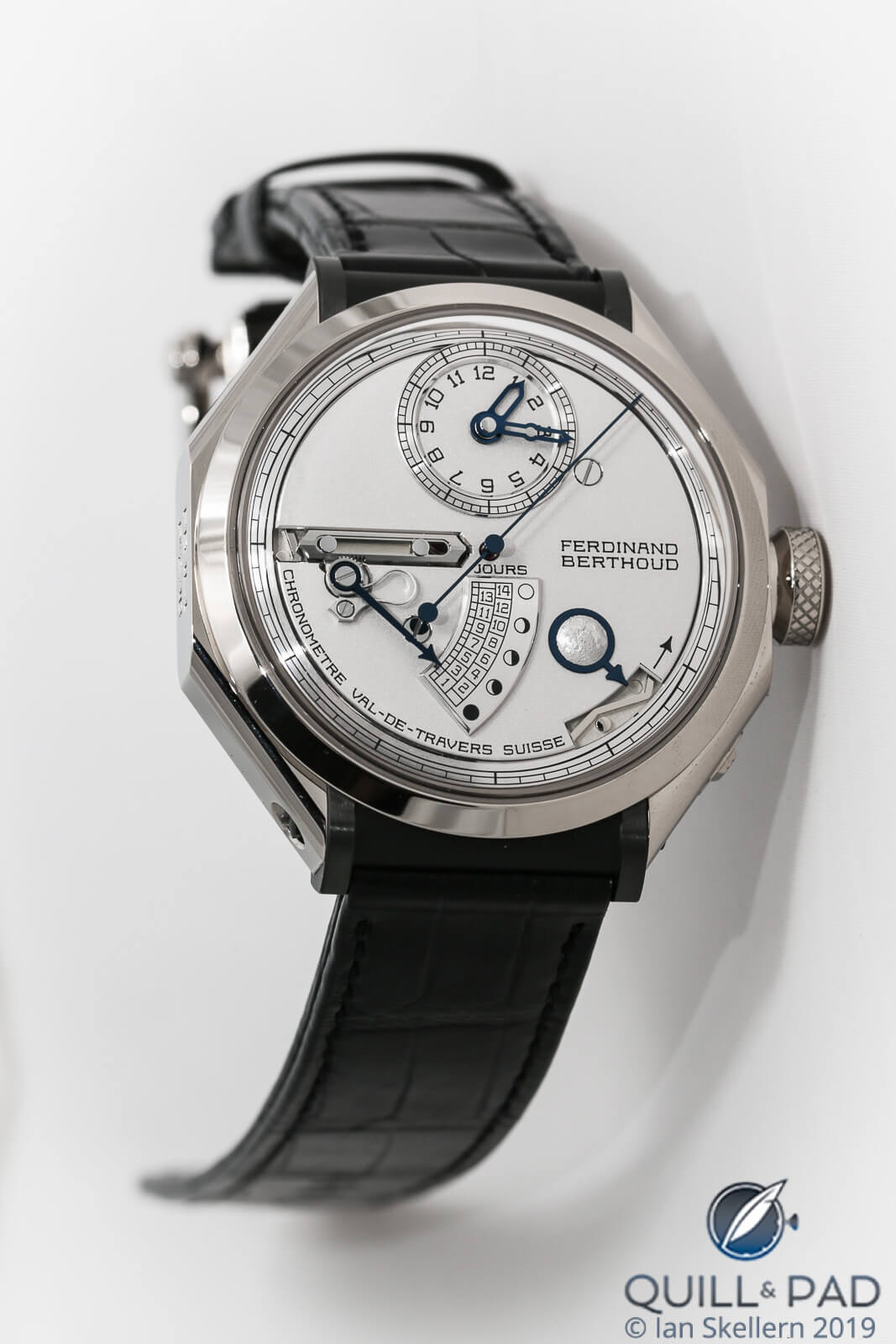
Ferdinand Berthoud FB 1L Near Side of the Moon
The basic function of the FB 1L is easy to describe as it centers on a single rack-and-pinion setup driven by a cam profile that translates positions into information. The dial is fairly simple like all Ferdinand Berthoud timepieces, kept clean and minimal to increase legibility and highlight craftsmanship and function.
But unlike earlier models that highlighted the tourbillon, power reserve mechanism, and gear train for the minutes, the FB 1L keeps the offset dial for hours and minutes and a long sweeping center second hand simple.
The focus of this model is the age-of-the-moon/moon phase mechanism.
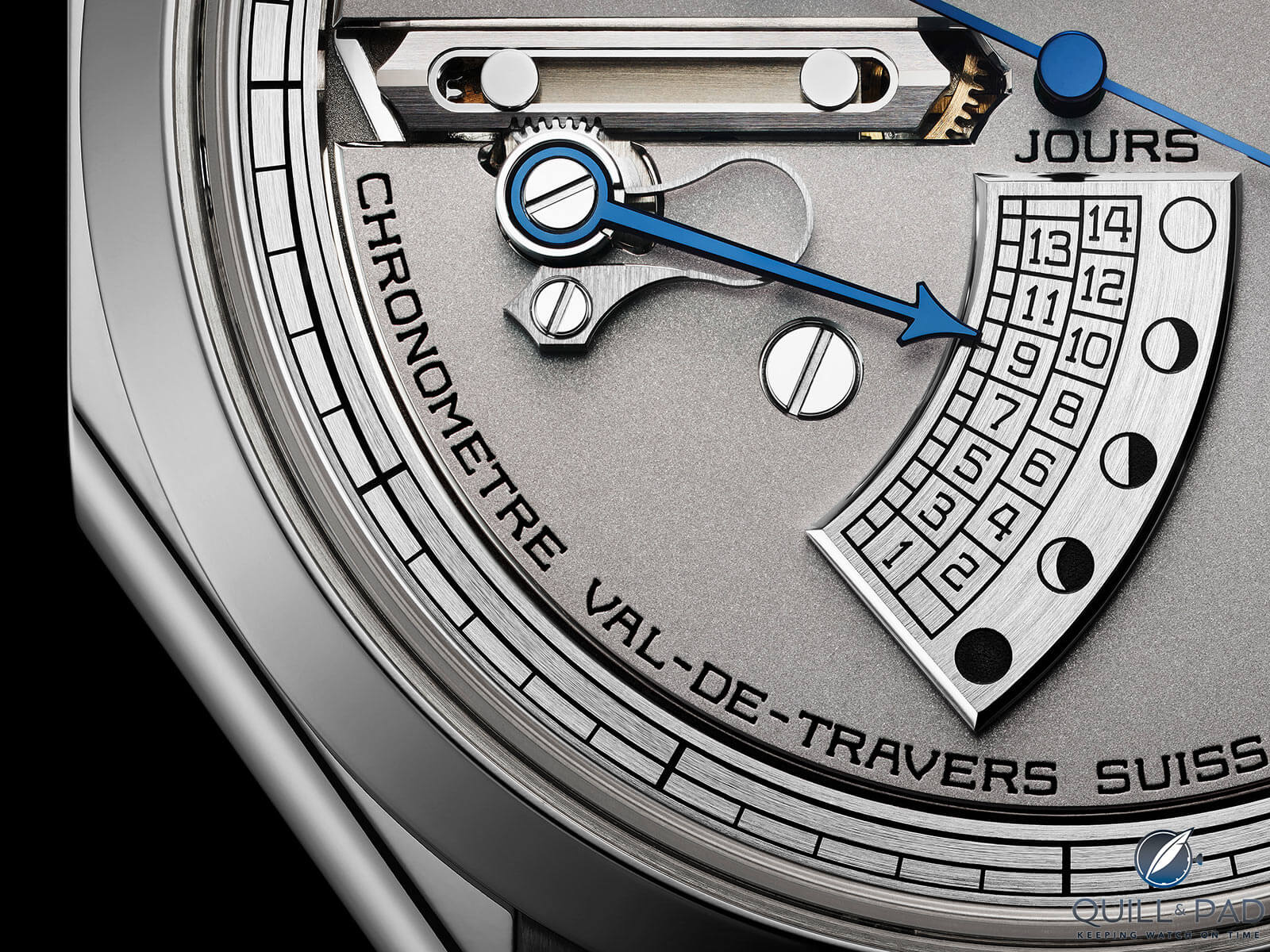
The Ferdinand Berthoud FB 1L moon phase display
Taking up most of the real estate between 8 and 9 o’clock, the mechanism drives a hand that sweeps back and forth across a track displaying both the age of the moon up to 14.5 days and the shape of the phases. The hand sweeps up as the cycle approaches full moon and sweeps down as it finishes the cycle toward new moon. Since the full lunar cycle takes 29.5 days, the track covers half the cycle as it travels each way thanks to the functionality of the mechanism.
Mechanics, stage left
But you may notice a problem with this seemingly straightforward display: how do you know if the phase is moving toward or away from full moon or new moon?
Ferdinand Berthoud thought of that. To the right of the age and phase-of-the-moon track is a fixed miniature moon. Around the moon, an arrow points to a zig-zag shape revealed in a cutout between 4 and 5 o’clock, which shows where in the cycle the indication is thanks to both a direction-of-travel arrow and a small polished post representing a full moon.
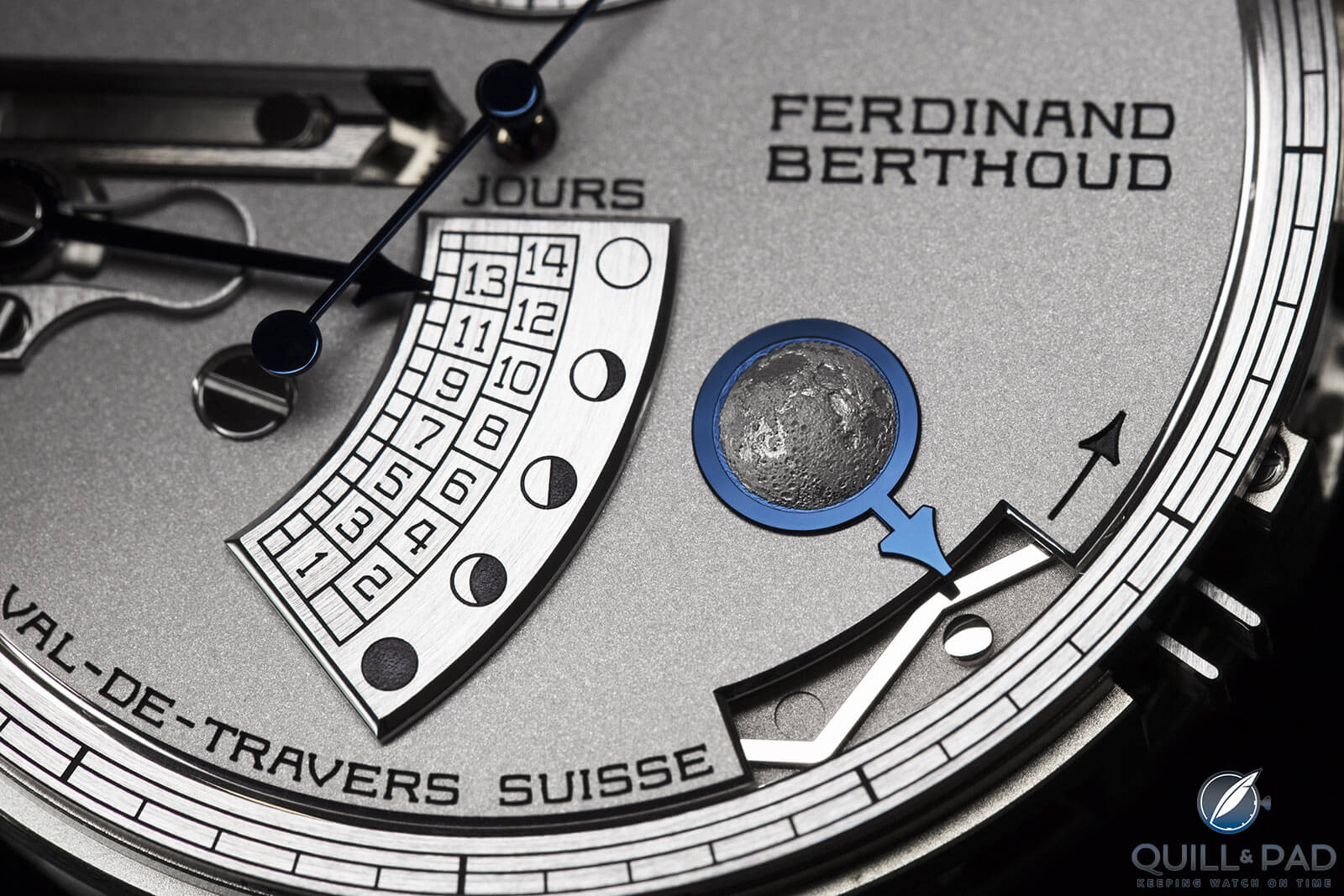
A close look at the moon of the Ferdinand Berthoud FB 1L Near Side of the Moon
The zig-zag path angles up and over the full moon and back down where, on the other side, you notice a dark circular recess representing the new moon. With the direction-of-travel arrow and the location along the angled path you can determine if the phase is heading toward full moon or new moon.
This is a clever way to indicate without needing to add visual details to or increase the range of motion for the age-of-the-moon indicator. But that zig-zag line isn’t just the indicator, it’s also the physical cam profile driving the indicator hand.
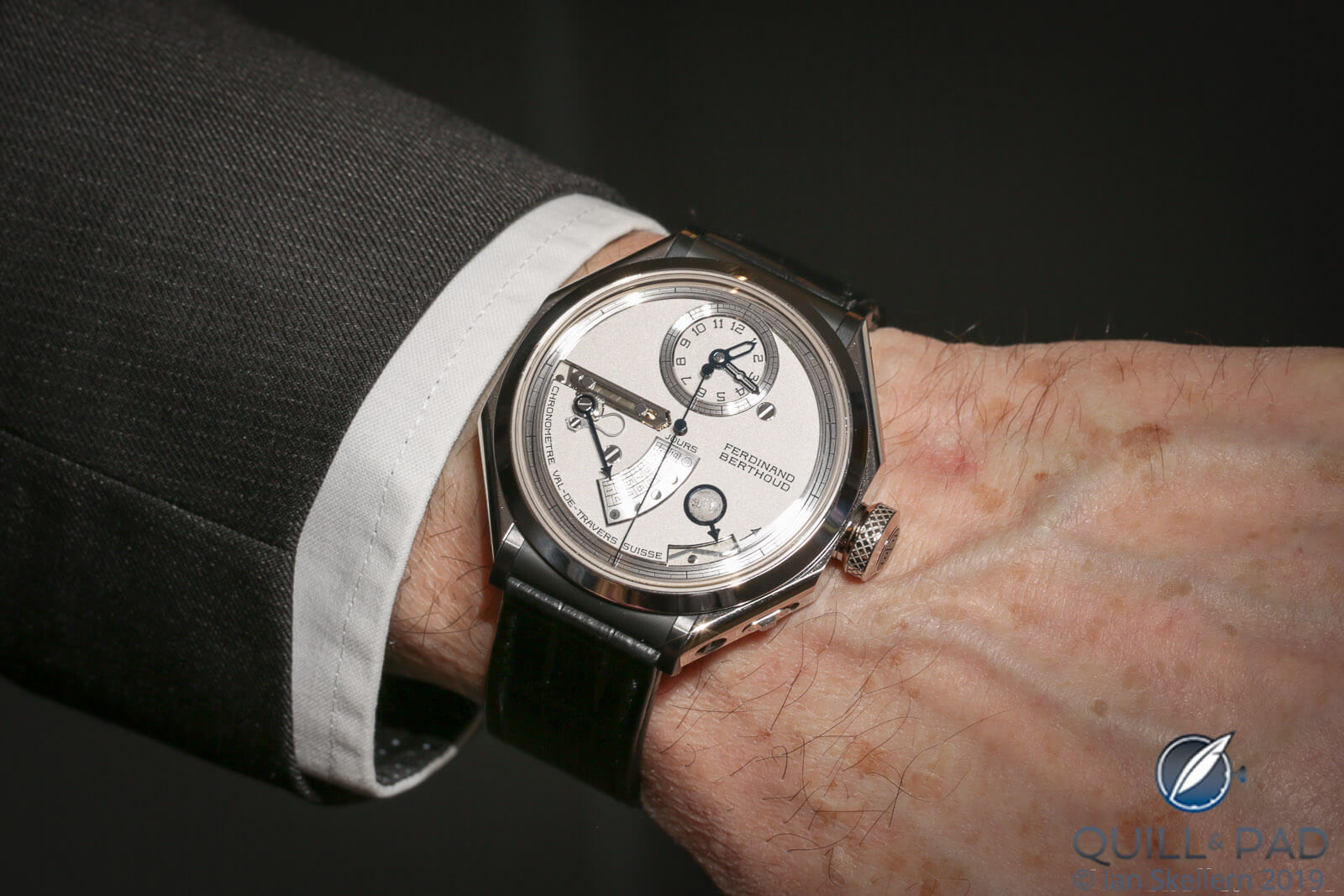
Ferdinand Berthoud FB 1L Near Side of the Moon on the wrist
Looking directly above the hand you notice a slide with two large chamfers on each end. Looking closely, you see that slide is actually the rack that drives the hand by moving back and forth to give the hand its range of motion. But what’s not as easy to see is that the chamfered edge on the left side of the slide is physically riding along the zig-zag cam profile visible on the other side of the dial.
That zig-zag is the actual calculated shape determining the position of the age-of-the-moon hand based on how far it slides the rack toward the center.
This is why the new moon indication on the cam track is not a raised physical component but a recessed shape; it would otherwise interfere with the cam follower every time it entered the low point since it rides on the inside of the track. Interestingly, the follower also shows the inverse of what the window on the right displays. As it rides up the profile it rotates the hand back down to the new moon position, ensuring the cam follower is always one half-cycle offset from the display.

Assembling the movement of the Ferdinand Berthoud FB 1L
Design matters as much as mechanics
This mechanism with its truly ingenious display was actually adapted from an historic Ferdinand Berthoud mechanism that displayed the equation of time. In this orientation it provides a large diameter for the moon phase cam, which also allows for a more precise gear ratio resulting in a more accurate moon phase period.
Its accuracy has been increased over the standard 122-year “precise” moon phase mechanism in most watches to a truly impressive 577 years before it will be off by one full day.
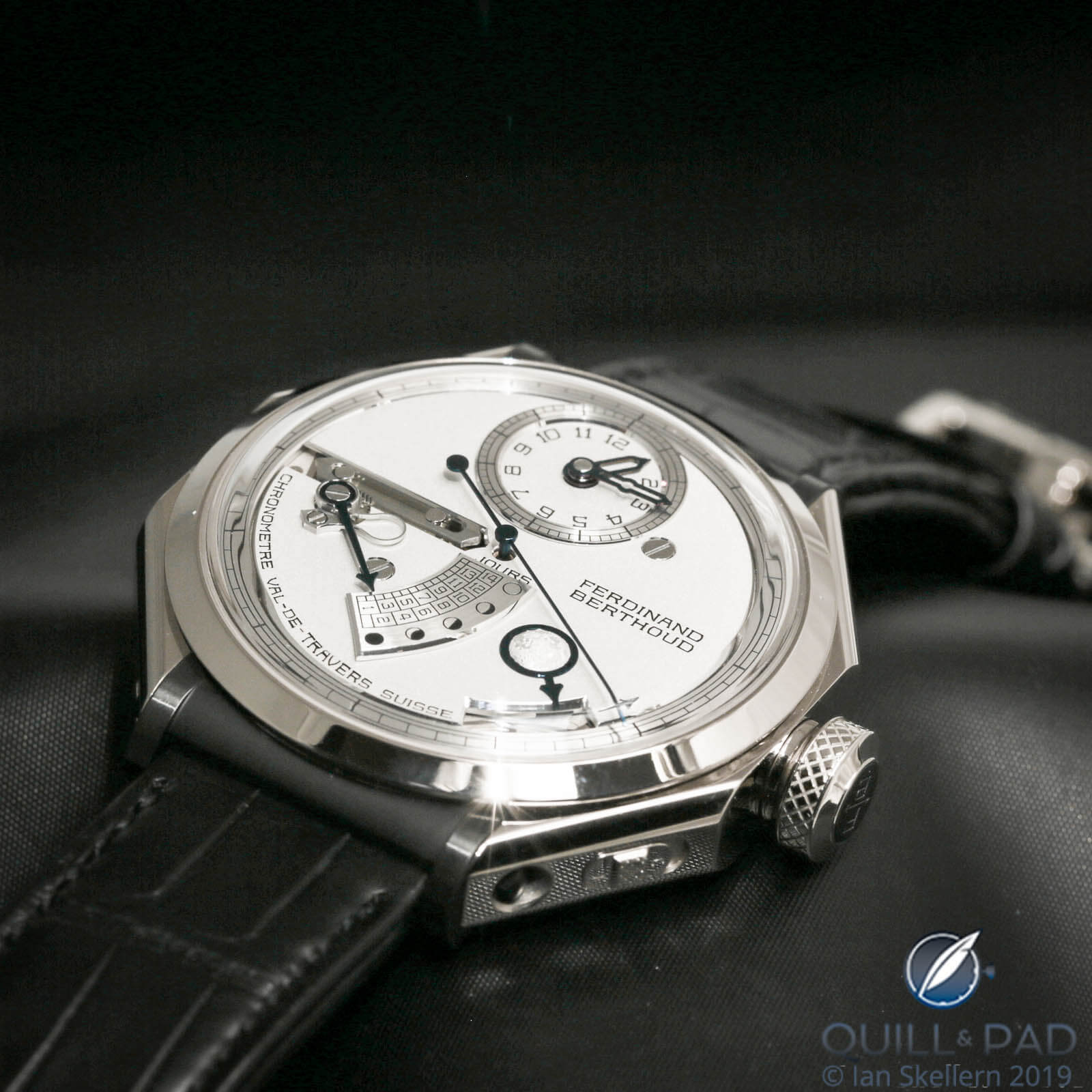
Ferdinand Berthoud FB 1L Near Side of the Moon
While this does not reach the stratospheric accuracy of the most precise moon phase mechanism out there – that honor belongs to the Andreas Strehler Sauterelle à Lune Perpetuelle – it is definitely long enough that you will never have to worry about its accuracy before you have to worry about the sweet release of death.
That might sound a bit morbid, but 577 years is a longer amount of time than timepieces have even been a thing. It is almost three times as long as the time that has passed since Ferdinand Berthoud died. Functionally, it makes this a very precise astronomical and horological instrument.
That instrument is also presented in a very subdued package, albeit one that strays a bit off the norm for most wristwatches thanks to its historically slanted case shape based on the marine chronometers of Ferdinand Berthoud and the simple regulator design of many of his timepieces.

Back of the Ferdinand Berthoud FB 1L
But there are subtle design cues that keep this watch feeling modern and current such as crisp edges, the modern photographic style of the engraved moon, and of course the clean, exposed mechanics. Even the sapphire crystal windows into the movement on the case edge expose its modernity.
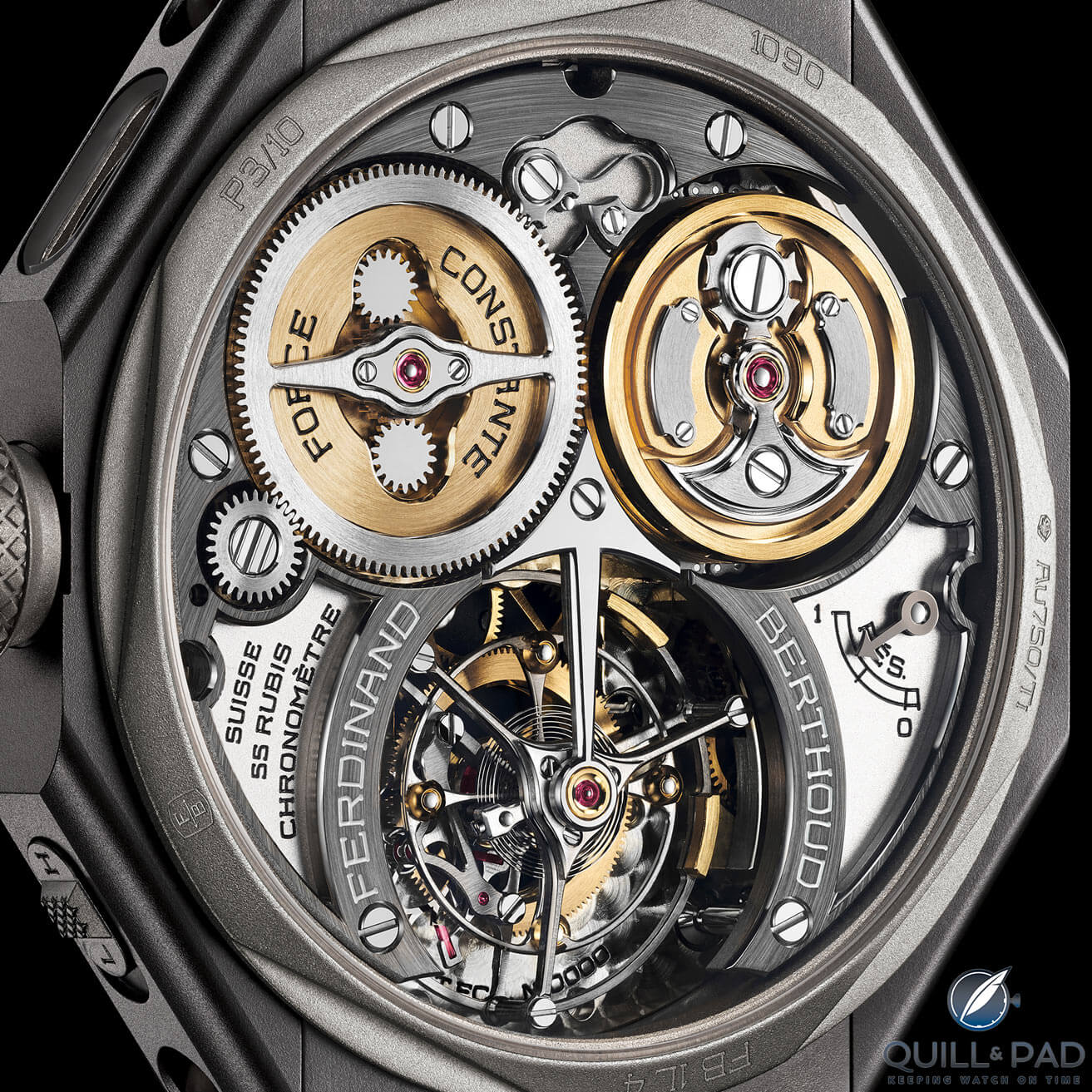
A view through the display back to Caliber FB-T.FC.L in the Ferdinand Berthoud FB 1L
Caliber FB-T.FC.L is generally traditional in its construction style with its fusée-and-chain assembly and large tourbillon. But the execution and finishing make it feel entirely contemporary while wearing a mask of tradition.
Both the FB-T.FC.L caliber and the FB 1L timepiece as a whole are an expert mixture of old and new in such a way that it doesn’t feel like a mashup of unrelated ideas. There really is a harmony to the design and engineering. And with the addition of a smorgasbord of lunar mechanics it becomes something on a whole new level once again.
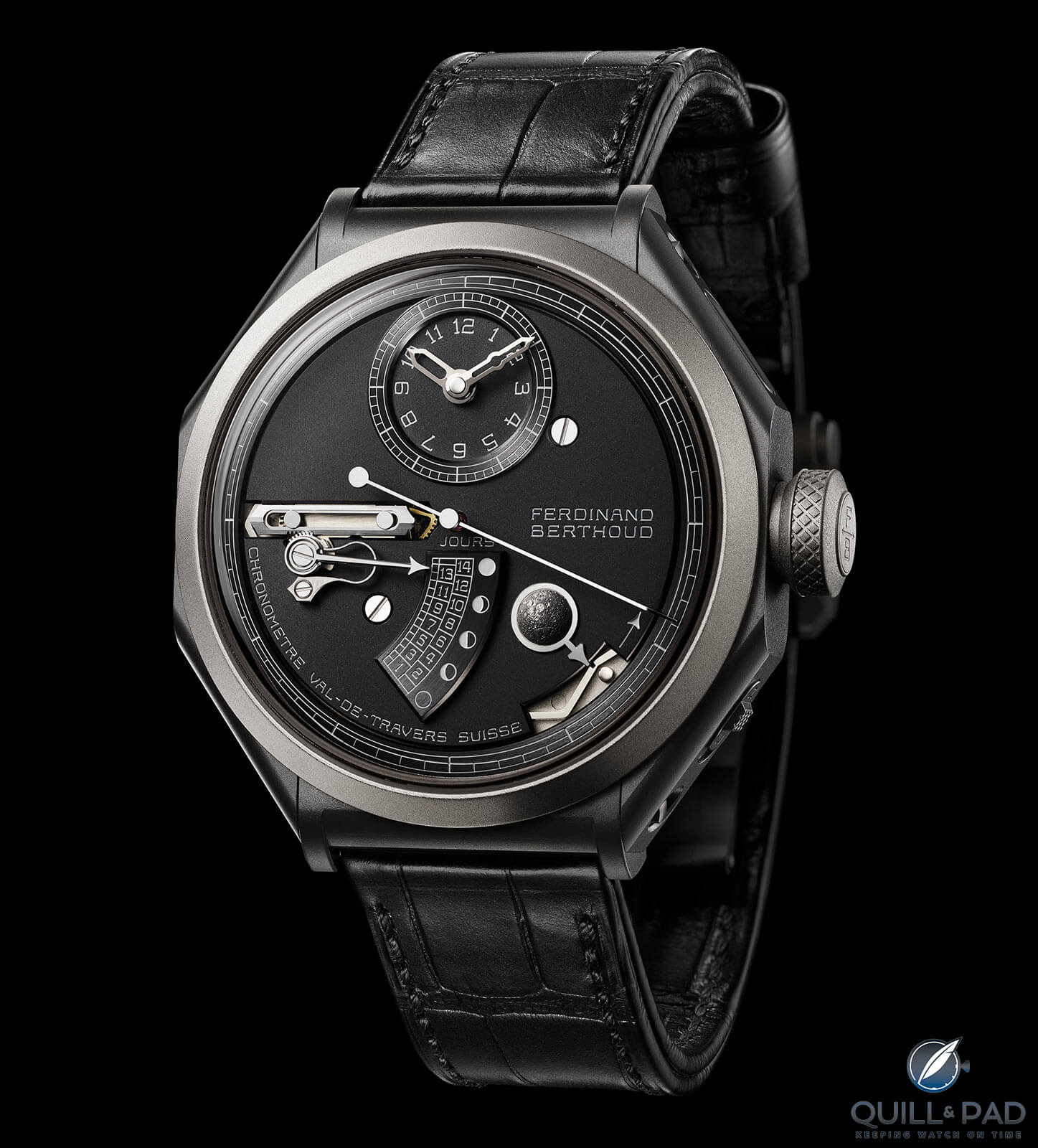
Ferdinand Berthoud FB 1L Far Side of the Moon
The Ferdinand Berthoud FB 1L is a unique and awesomazing creation from a still-young boutique brand, and if its work so far is any indication then we definitely will have even more to look forward to in the future.
While I wait patiently for the next creation, let’s break down the FB 1L using the most important metrics in the industry . . . my arbitrary ranking scales!
- Wowza Factor * 9.7 Any time a brand spends that much energy creating something new and unique, especially relating to the moon, I am definitely going to be wowed!
- Late Night Lust Appeal 103» 1,010.085m/s2 What better time to appreciate the moon than while lusting after it all night!
- M.G.R. * 70.3 Very serious movement in the FB 1L, there was no taking the easy way out with this movement!
- Added-Functionitis * Moderate The complex moon phase and a power reserve make this more than just a time-only watch, though no matter how cool the mechanisms are it still only needs regular strength Gotta-HAVE-That cream for the awesome yet indiscrete swelling.
- Ouch Outline * 11.4 The aftermath of a tooth extraction and dental implant! I dislike the dentist more than I dislike a lot of things, so it would take a watch as awesome as this to get me to happily go in
- Mermaid Moment * Is that an age of the moon indicator?! Rare complications lead to hasty engagements and a long life of knowing you just got swept off your feet!
- Awesome Total * 945 Multiply the number of watches that will be made (20) with the number of jewels in the movement (55) before adding the number of components in the fusee chain (790) and finally dividing by the number of versions (2) for a lunular awesome total!
For more information, please visit www.ferdinandberthoud.ch/en/collection/chronometer-fb1L1.
Quick Facts Ferdinand Berthoud FB 1L
Case: 44 x 13.95 mm, white gold or ceramized titanium
Movement: in-house manual winding Caliber FB-T.FC.L with fusée and chain with one-minute tourbillon, officially C.O.S.C. chronometer certified, pillar-style architecture, 3 Hz/21,600 vph frequency
Functions: hours, minutes, seconds; power reserve indication, age of the moon, moon phases
Limitation: 10 pieces in each version
Price: $278,500 for white gold Near Side of the Moon; $262,500 for anthracite-colored ceramized titanium Far Side of the Moon



Leave a Reply
Want to join the discussion?Feel free to contribute!